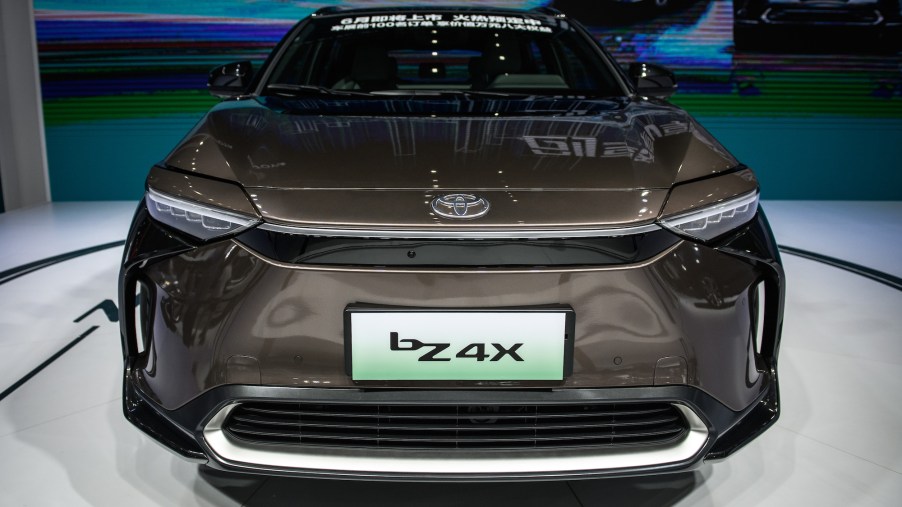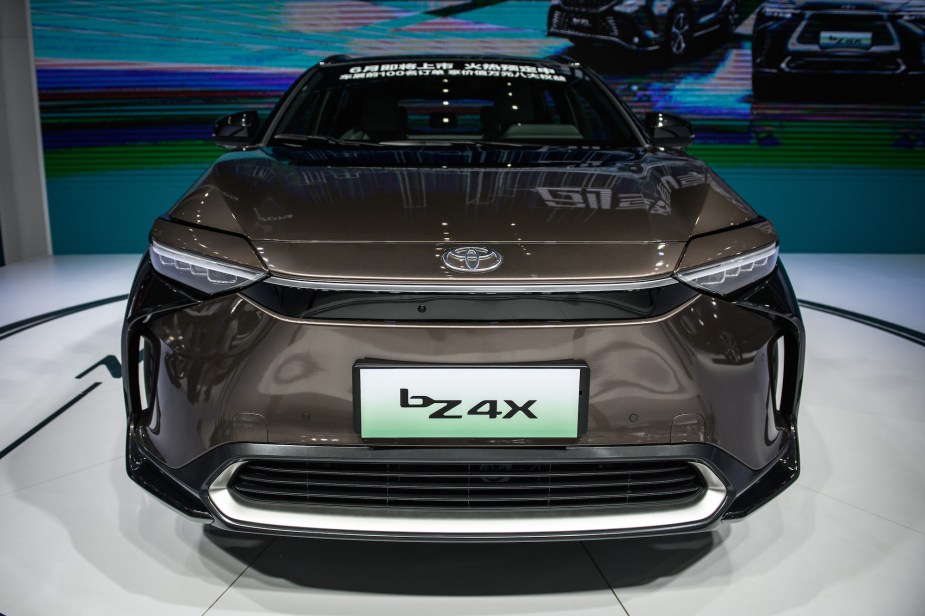
3 Reasons to Buy a 2023 Toyota bZ4X, Not a Hyundai Kona Electric
The electric vehicle space is heating up. More specifically, in the electric SUV segment, consumers love the incredible options. The 2023 Toyota bZ4X is one of the newest entries in the growing EV market. But does it have the chops to compete with the Hyundai Ioniq 5, a model that could possibly replace it? And what about the Hyundai Kona Electric?
Before you make your final EV purchasing decision, this is the comparison you need to see. Here are three significant reasons why you should buy the 2023 Toyota bZ4X, not the Hyundai Kona Electric. And number two might surprise you.
1. More maximum cargo capacity with the bZ4X

One of the first advantages the 2023 Toyota bZ4X has over the Hyundai Kona Electric is cargo capacity. A side-by-side comparison of the dimensions makes it pretty clear that the victor here with more space is the bZ4X. Car and Driver list the Toyota EV with 26 cu-ft of cargo volume. Car and Driver show the Kona Electric as having only 19 cu-ft of cargo volume.
If you visit Toyota, you’ll see an even more in-depth breakdown of cargo capacities as they relate to estimated interior volume total, passenger volume, behind the rear seat capacity, and behind the front seat capacity. Those measurements are 123 cu-ft, 94.4 cu-ft, 27.7 cu-ft, and 56.9 cu-ft, respectively. In comparison, visiting Hyundai to compare specs, it’s easy to see which is more spacious. The 2022 Hyundai Kona Electric offers 19.2 cu-ft and 45.8 cu-ft of rear cargo, measured with the seats up and down.
2. More payload capacity
Consumer Reports shares some of the team’s sentiments with the first drives of the 2023 Toyota bZ4X and outlines two trim levels, the XLE and the Limited. But if weight carrying ability matters to you, you’ll appreciate the maximum payload for both trims is an impressive 1,169 pounds. Hauling people and gear is a breeze and another reason the bZ4X deserves a look.
Alternatively, while the Consumer Reports testers give similarly favorable first impressions of the 2022 Hyundai Kona Electric, its maximum payload only measures 1,047 pounds. Most consumers interested in any SUV are prioritizing hauling capabilities, making the distinction between these two EV contenders a potential deal-breaker for buyers.
3. More ground clearance with the bZ4X
When reviewing the rest of the stats, the 2023 Toyota bZ4X is bigger all around, too. Its wheelbase measures 112.2 inches, which is more substantial than Kona’s 102.4 inches. In length and height, the bZ4X is 184.6 inches and 65 inches, respectively, both more than Kona’s 164.6 inches and 61.2 inches. So, if a spacious interior and more cargo capacity are what you’re looking for in an electric SUV, the Toyota is a top choice.
The 2022 Hyundai Kona Electric has a minimum ground clearance of 6.2 inches, according to Edmunds. In comparison, Edmunds shows the 2023 Toyota bZ4X as having a minimum ground clearance of 8.1 inches. This translates to better designs for EVs with battery placement under the body. Depending on where you plan to drive your electric SUV, the higher ground clearance will reduce the risks of drive-over damage to the batteries.
There’s no question. As a consumer, it is a tough decision if electric SUVs are on your radar. There are plenty of models worth considering, depending on which industry review you read.
But if you want to decide based on data and side-by-side comparisons of features and specs that matter, like ground clearance and size, payload capacity, and cargo space, the 2023 Toyota bZ4X is the better choice when compared to the 2022 Hyundai Kona Electric.


